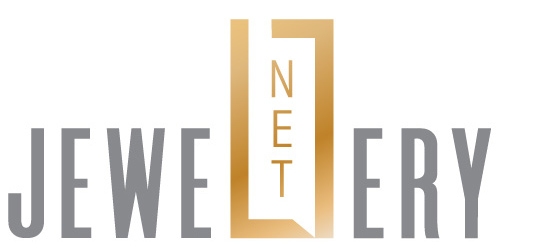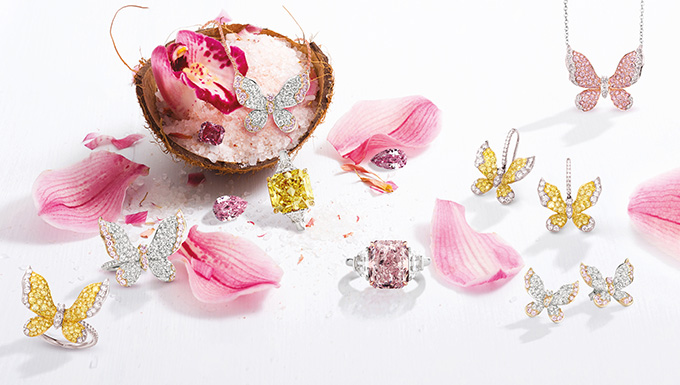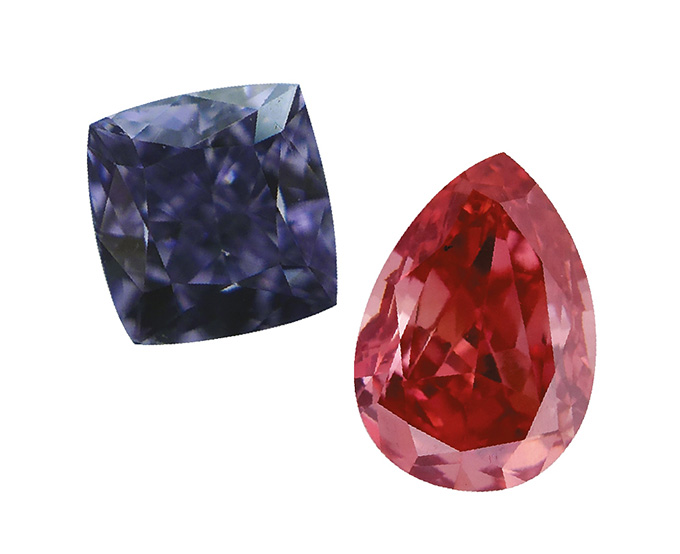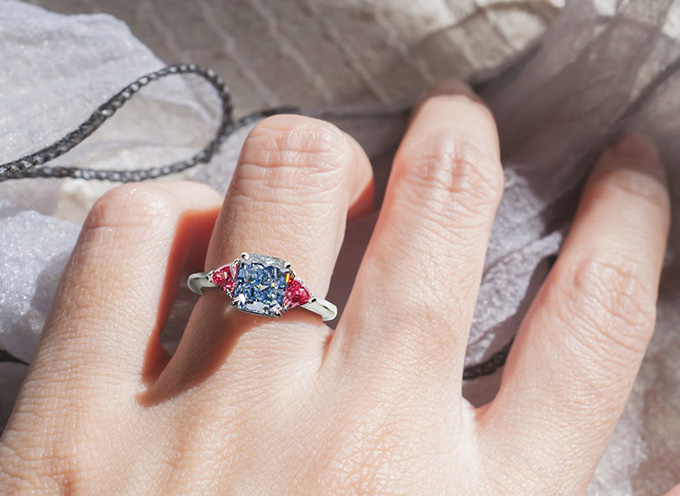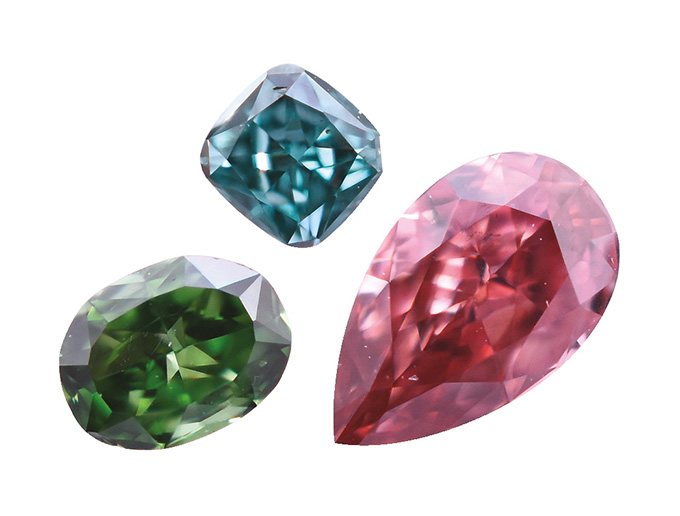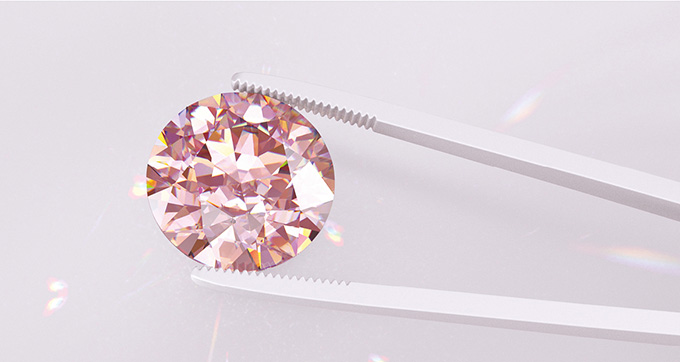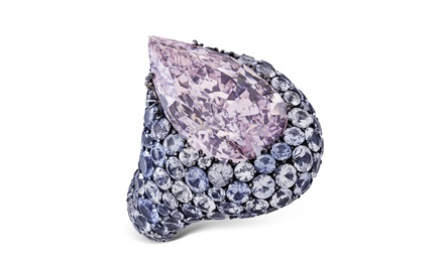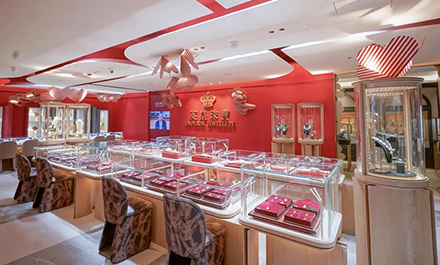Ultra-rare fancy colour diamonds continue to fascinate affluent buyers in China amid economic challenges, thanks to the diamonds’ exceptional appeal and investment potential.
This article first appeared in the JNA May/June 2025 issue.
Amid existing uncertainties, China remains a key market for fancy colour diamonds. Affluent Chinese buyers who seek fancy colour diamonds for their exclusivity and investment value are expected to fuel growth in this product category, according to industry players. A rising interest in rare colours could also drive sales, they added.
Top-quality stones
Eden Rachminov, founder of Rachminov Diamonds 1891, said Chinese buyers are a significant segment of the fancy colour diamond market. In fact, majority of private buyers are Chinese individuals who often purchase fancy colour diamonds in the US, Europe and China.
High-quality stones are topping the shopping lists of discerning Chinese buyers. According to Eric Chen, Asia Pacific sales director of AA Rachminov Diamonds, demand for 10- to 20-carat fancy yellow diamonds has remained stable over the last 12 months.
Tony Saade, director of Asia Pacific at Antwerp Cut, echoed this sentiment, noting that Chinese private collectors are particularly drawn to premium and ultra-rare fancy colour diamonds in larger sizes and with higher clarity. These buyers are well-educated about fancy colour diamonds, often possessing professional knowledge when examining the stones.
“Chinese buyers do not buy fancy colour diamonds just to put them in the safe; they enjoy wearing them,” noted Saade.
Eden added that relatively stable fancy colour diamond prices make them an appealing option for those seeking wealth preservation. “Buyers know that the value of the diamond they are purchasing will either remain the same or go further up,” he explained.
Rainbow Gems (HK) Ltd Director Rashmin Donda, for his part, observed that while yellow diamonds are currently the most accessible, there is growing interest in rarer colours such as pink, blue, green, orange and brown.
The company offers a wide range of white and fancy colour diamonds, from commercial grade to certified stones. Its major customers are jewellery brands and independent jewellers.
Pink fantasy
Among the most coveted fancy colour diamonds in China are pink diamonds, said William Gant, managing director, Australia of US-based LJ West Diamonds Inc.
He explained that pinks are among the rarest of fancy colour diamonds since 90 per cent of the world's pink diamonds were sourced from the now-closed Argyle mine
in Western Australia. Currently, there is no other mine that can rival Argyle’s stature, Gant added.
Scarcity has made Argyle pink diamonds highly sought after by Chinese buyers who appreciate the diamonds’ rarity and feminine colour as well as the prestige associated with the Argyle brand.
“I get a lot of feedback from Chinese clients about their love for pink diamonds. They are mostly from Shanghai and other major cities as well,” said Gant. “The Argyle brand is now on the radar of Chinese buyers. They are fixated with this name and the certificate that comes with the stones.”
LJ West’s clients include jewellers and private investors who deal with high-net-worth buyers and collectors.
Gant emphasised that there is solid appetite for Argyle pink diamonds in China, despite its troubled economy inevitably impacting buyers’ purchasing power.
He also mentioned that prices remained flat for a time in 2024, owing to global uncertainties, particularly in the Asian market.
“We are starting to see more enquiries coming in again this year,” said Gant. “Historically, the prices of pink, blue and red diamonds have shown an uptrend, with other colours steadily increasing in value. However, this is no indication of what the future holds."
Challenges and opportunities
According to trade stakeholders, the luxury industry in China has faced post-Covid challenges, exacerbated by a domestic real estate crisis and reduced consumer spending. The shift in buyer preferences towards gold jewellery also inevitably affected the fancy colour diamond business.
“Demand for fancy colour diamonds is not as strong as it once was,” said Kunal Sheth, managing director of House of Gems Ltd. He attributed this decline to China's economic slowdown, which has led to reduced demand for luxury goods. House of Gems specialises in investment-grade fancy colour diamonds.
Sheth added that Chinese buyers accounted for up to 50 per cent of the company’s business two years ago, but the figure has since declined significantly.
“We are hoping that the market will realise that these stones are actually becoming even rarer, and they are a good store of value,” said Sheth.
Donda of Rainbow Gems observed that prices of commercial-grade fancy yellow diamonds are declining as the stones have become readily available while prices of pink and blue diamonds are stable due to their rarity.
“People always want to collect rare items,” Donda explained. “As you can see, ultra-rare pink and blue diamonds are selling at international auctions.”
This highlights the resilience of rare fancy colour diamonds, he noted.
There is also limited supply of high-quality fancy colour diamonds. As mines get depleted, the rarity of these stones further increases, contributing to their allure. This, however, poses a challenge for suppliers, according to Eden of Rachminov Diamonds 1891 and Saade of Antwerp Cut.
To drive business, companies are aiming to innovate their products. LJ West, for instance, is offering fancy colour diamond jewellery through its jewellery brand Scott West. The jewellery line features both high-end unique pieces and relatively affordable collections with smaller fancy colour diamonds such as the Butterfly Collection.
Gant of LJ West said the aim is to showcase the versatility of fancy colour diamonds and possible combinations of various colours.
Amid these challenges, fancy colour diamond dealers remain optimistic about prospects moving forward. Saade anticipates sales to improve in the second half of the year, citing the stones’ inherent value as well as potential economic recovery in China as growth drivers.
